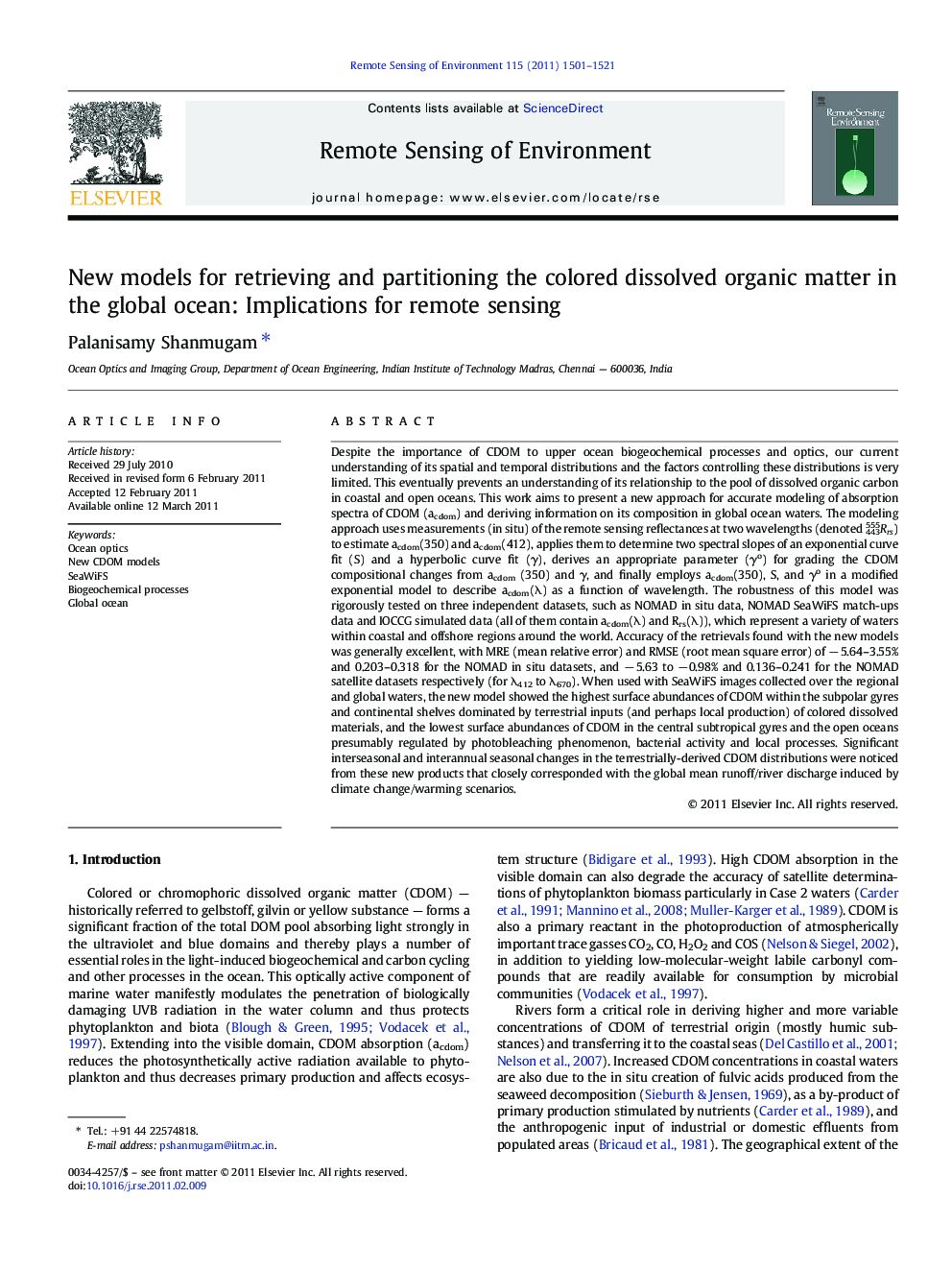| کد مقاله | کد نشریه | سال انتشار | مقاله انگلیسی | نسخه تمام متن |
|---|---|---|---|---|
| 4459388 | 1621291 | 2011 | 21 صفحه PDF | دانلود رایگان |

Despite the importance of CDOM to upper ocean biogeochemical processes and optics, our current understanding of its spatial and temporal distributions and the factors controlling these distributions is very limited. This eventually prevents an understanding of its relationship to the pool of dissolved organic carbon in coastal and open oceans. This work aims to present a new approach for accurate modeling of absorption spectra of CDOM (acdom) and deriving information on its composition in global ocean waters. The modeling approach uses measurements (in situ) of the remote sensing reflectances at two wavelengths (denoted 443555Rrs) to estimate acdom(350) and acdom(412), applies them to determine two spectral slopes of an exponential curve fit (S) and a hyperbolic curve fit (γ), derives an appropriate parameter (γo) for grading the CDOM compositional changes from acdom (350) and γ, and finally employs acdom(350), S, and γo in a modified exponential model to describe acdom(λ) as a function of wavelength. The robustness of this model was rigorously tested on three independent datasets, such as NOMAD in situ data, NOMAD SeaWiFS match-ups data and IOCCG simulated data (all of them contain acdom(λ) and Rrs(λ)), which represent a variety of waters within coastal and offshore regions around the world. Accuracy of the retrievals found with the new models was generally excellent, with MRE (mean relative error) and RMSE (root mean square error) of − 5.64–3.55% and 0.203–0.318 for the NOMAD in situ datasets, and − 5.63 to −0.98% and 0.136–0.241 for the NOMAD satellite datasets respectively (for λ412 to λ670). When used with SeaWiFS images collected over the regional and global waters, the new model showed the highest surface abundances of CDOM within the subpolar gyres and continental shelves dominated by terrestrial inputs (and perhaps local production) of colored dissolved materials, and the lowest surface abundances of CDOM in the central subtropical gyres and the open oceans presumably regulated by photobleaching phenomenon, bacterial activity and local processes. Significant interseasonal and interannual seasonal changes in the terrestrially-derived CDOM distributions were noticed from these new products that closely corresponded with the global mean runoff/river discharge induced by climate change/warming scenarios.
Research highlights
► We developed new models for predicting the spectral behavior of colored dissolved organic matter and differentiating and classifying its nature and types in global ocean waters.
► The new models will increase our current understanding of its spatial and temporal distributions and the factors controlling these distributions in global ocean waters
► They will help standardize the analysis of the its absorption curve and provide more complete information on its chemical composition.
Journal: Remote Sensing of Environment - Volume 115, Issue 6, 15 June 2011, Pages 1501–1521